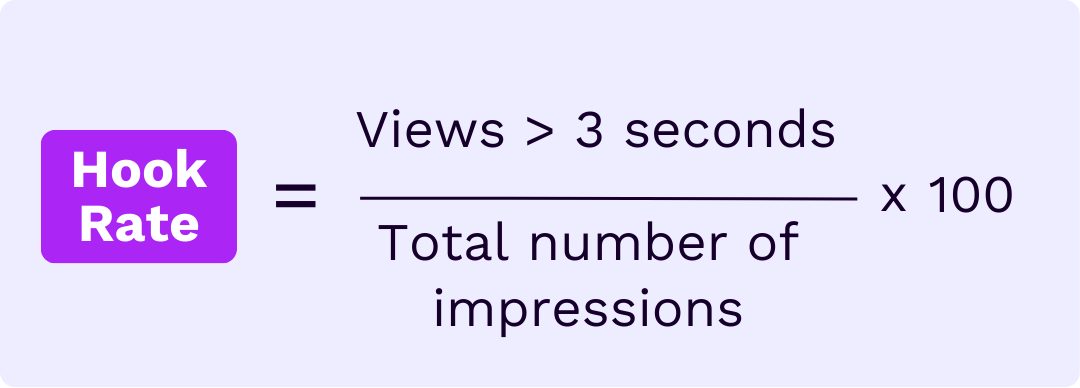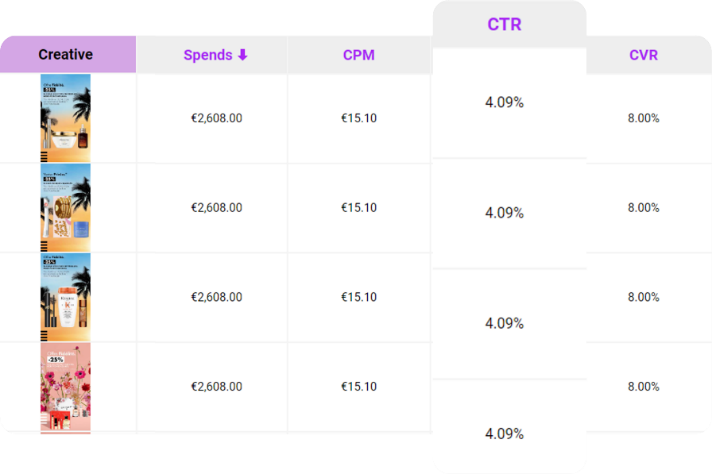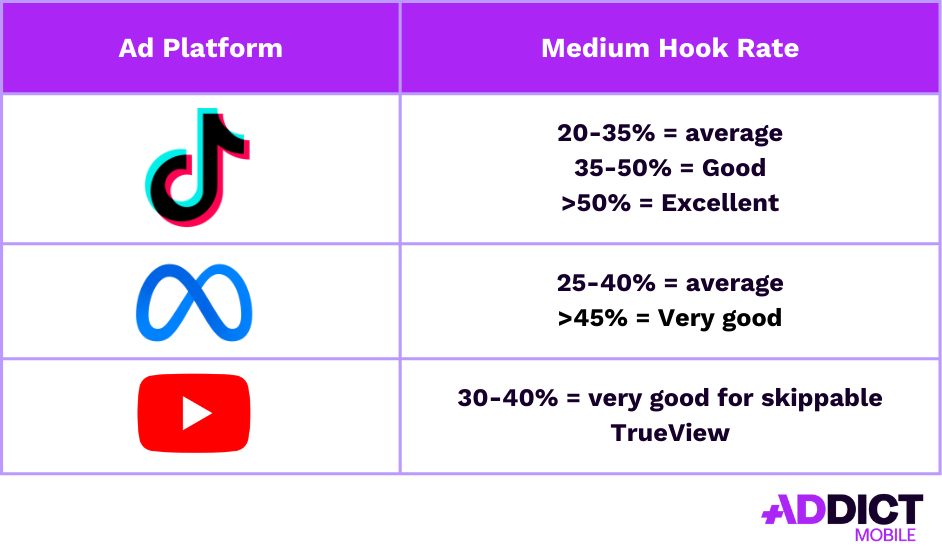Hook Rate: Definition, Measurement, and Impact in App Marketing
Introduction
In mobile marketing, capturing the user’s attention within the first few seconds is crucial. In an ultra-competitive environment, where users are constantly bombarded with content, the hook rate has become a key metric to assess the effectiveness of the initial seconds of an ad or user experience. Understanding and optimizing this KPI can make all the difference in terms of engagement and retention.
What Is the Hook Rate?
Definition
The hook rate measures how well a piece of content—usually a video ad—manages to capture the user’s attention in the very first seconds. It’s typically calculated as the percentage of users who watch at least the first 3 seconds of a video, compared to the total number of impressions.
👉 Formula :

This KPI is especially useful for assessing video creative performance in user acquisition (UA).
Effect on Engagement and Audience Retention
A good hook rate means the creative content generates instant interest. It’s a key prerequisite for driving engagement—if users drop off in the first few seconds, they’ll never see the call-to-action (CTA) or the core message of the campaign.
A poor hook rate often correlates with low click-through rates, higher CPI, and lower retention, because the users acquired were not sufficiently engaged from the start.
Why Monitor This KPI in App Marketing?
In performance-based mobile campaigns, every second counts. The hook rate addresses several key concerns in mobile marketing:
- Quickly identify the top-performing creatives during A/B testing
- Iterate more effectively on visuals and messaging
- Optimize acquisition costs (CPI) by promoting only high-impact content
- Improve post-install retention by attracting more engaged users from the beginning
It’s also a valuable indicator for creative teams, as it provides immediate feedback on storytelling efficiency.
Why Is It Important?
A strong hook rate is often associated with:
- Better average watch time
- Higher click-through rate (CTR)
- Improved conversion rate (CVR) over time (especially in gaming)
In short, the hook rate is a critical KPI in performance marketing—helping quickly identify which creative concepts are engaging and which ones should be reworked.
How to Measure the Hook Rate
Most advertising platforms (Meta, TikTok, YouTube, etc.) provide detailed data on video watch duration. To measure the hook rate, typically you need to:
- Export video view statistics (2s, 3s, etc.)
- Identify the number of views ≥ 3 seconds
- Compare that to total impressions or video starts
Some platforms like TikTok or Meta Ads Manager display this KPI directly, sometimes labeled as “3-Second View Rate” or “Video Hook Rate.”
👉 Best Practices:
- Compare hook rates by format (story, in-feed, rewarded) to adapt creatives accordingly
- Use creative analytics tools to automatically consolidate and visualize these data points
At Addict Mobile, we provide performance dashboards that offer granular views by creative. This helps identify top-performing creatives at a glance—allowing you to scale the best ones faster.

Where to Find This Data
- TikTok Ads Manager: The column “Video Views at 3 Seconds” allows you to calculate the hook rate.
- Meta Ads (Facebook/Instagram): Use “3-second video plays” vs total impressions.
- YouTube Ads: Compare impressions vs viewers at 5 or 10 seconds, depending on the format.
- MMPs or UA platforms (Appsflyer, Singular, etc.): These tools can provide additional data to be combined with creative analytics if available.
- Addict Mobile’s Hub: Our dashboards allow filtering by geo, source, OS, and more.
Benchmarks to Consider (adjusted by vertical/platform)

Strategies to Improve Your Hook Rate
If your hook rate is low—don’t worry! There are many proven techniques to help boost it:
Grab Attention in the First 3 Seconds
This is the most critical factor for hook rate. We recommend using high-impact visuals or dynamic animation right at the beginning—it’s the key to convincing your audience.
Make sure the core message or gameplay is shown immediately.
Examples:
- An impressive action scene
- A reward dropping
- A strong character reaction
Create Curiosity
To capture attention, rely on surprise. Asking a provocative question, showing something unexpected or an incomplete scenario sparks curiosity and makes the viewer want to keep watching.
Examples:
- “Can you solve this?”
- “Only 2% finish this level”
- “He didn’t expect this to happen…”
Use Native Vertical Formats
Optimizing for platforms like TikTok, Reels, or Shorts is essential—meaning full-screen, vertical, and dynamic formats. Videos should be made for mobile, not just resized.
Leverage Impactful Sound Design
Adding dynamic music or a memorable sound effect in the first few seconds helps to grab attention. The rhythm of the sound should match the pace of the video.
Craft Effective On-Screen Text
We recommend keeping videos under 45 seconds, as shorter formats generally perform better.
- Deliver a short, punchy message
- Use clear, high-contrast typography
- Avoid overloading visuals—stick to one idea max
If the screen is cluttered, you risk losing the viewer’s focus.
Test, Test, and Test Again!
Advertising is not an exact science—you can’t predict which concept will perform best without testing.
- Try multiple intro versions for the same video
- Vary the creative angle: humor, shock, challenge, ASMR, pure gameplay
- Compare hook rates to identify the best-performing formats
Example:
For a gaming client, we tested different layouts and creators with different speaking styles to find the top-performing videos.
Tailor Creatives to the Target Audience
A hook that works for 18–24-year-olds might flop with the 35+ audience. Similarly, visuals and tone should be adapted across different geographies.
For Games Specifically:
- Use a fake tutorial as a psychological hook to create immediate engagement
- Highlight addictive gameplay mechanics right away
- Show a player fail or mistake to trigger curiosity (“I can do better!” effect)

Do not hesitate to contact with our teams
Addict can support you to improve your performance.
Conclusion
The hook rate is more than just a video metric—it’s a strategic indicator that helps optimize user acquisition campaigns, guide creative decisions, and engage users from the very first seconds of contact. By monitoring it closely and testing various creative levers, you’ll enhance both your marketing performance and your overall user experience.


